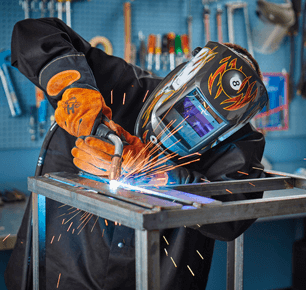Welding equipment is essential for various welding processes used in industries such as construction, manufacturing, and automotive. Here is some information about welding equipment, including types of welding machines and safety considerations:
Types of Welding Equipment:
Welding Machines
Welding machines are the primary tools used in welding processes. Camarc Welding specialise in the supply, maintenance and repair of a range of welding machines including Lorch, Camarc, Fronius and others. There are several types of welding machines, including:
Arc Welding Machines: These machines use electricity to create an arc between an electrode and the workpiece, melting the metals together. Common types include stick (SMAW), MIG (GMAW), and TIG (GTAW) welders.
Gas Welding Equipment: This includes oxy-fuel welding and cutting equipment, which uses a mixture of oxygen and fuel gases like acetylene to generate heat for welding.
Resistance Welding Machines: These machines pass an electrical current through the workpieces to join them. Spot welding and seam welding are examples.
Protective Gear:
Welding involves significant heat and light, so protective gear is crucial. This includes helmets with auto-darkening lenses, welding gloves, flame-resistant clothing, and welding boots.
Welding Accessories
Various accessories are used in welding, such as welding electrodes, filler metals, welding clamps, chipping hammers, wire brushes, and welding tables.
Gas Cylinders
Welding processes like MIG and TIG often require gas cylinders filled with shielding gases like argon or CO2.
Safety Considerations
Welding can be hazardous if not done safely.
Here are some safety considerations when working with welding equipment:
Proper Ventilation: Ensure adequate ventilation in the welding area to remove welding fumes, which can be harmful if inhaled.
Eye Protection: Always wear a welding helmet with the appropriate shade lens to protect your eyes from the intense light produced during welding.
Protective Clothing: Wear flame-resistant clothing to protect yourself from sparks and hot metal. Also, use gloves and welding aprons.
Electrical Safety: Inspect electrical cords and connections for damage regularly. Keep welding equipment dry and away from water.
Fire Safety: Have fire extinguishers nearby and be aware of fire hazards, especially when working around flammable materials.
Training: Proper training and certification are essential for safe welding. Understand the specific hazards associated with different welding processes.
Camarc Welding supply a comprehensive range of spares and accessories for all makes of welding machines. Visit our online store to see the full range.
Maintenance
Regular maintenance of welding equipment is essential to ensure it functions correctly and safely. This includes cleaning, inspecting, and replacing worn parts as needed.
At Camarc Welding, we specialise in repair and maintenance of all makes of welding equipment to get your operation up and running with as little delay as possible.
Choosing the Right Equipment:
When selecting welding equipment, consider factors like the type of welding process you’ll be using, the thickness of materials you’ll be welding, and your skill level. The right equipment can significantly impact the quality of your welds.
Remember that welding can be a complex skill to master, so seeking proper training and adhering to safety guidelines is crucial for anyone working with welding equipment. Always follow manufacturer recommendations and safety guidelines for your specific equipment and welding process.
If you have any questions or concerns about welding, ask us, we have many years of experience to help you out.
